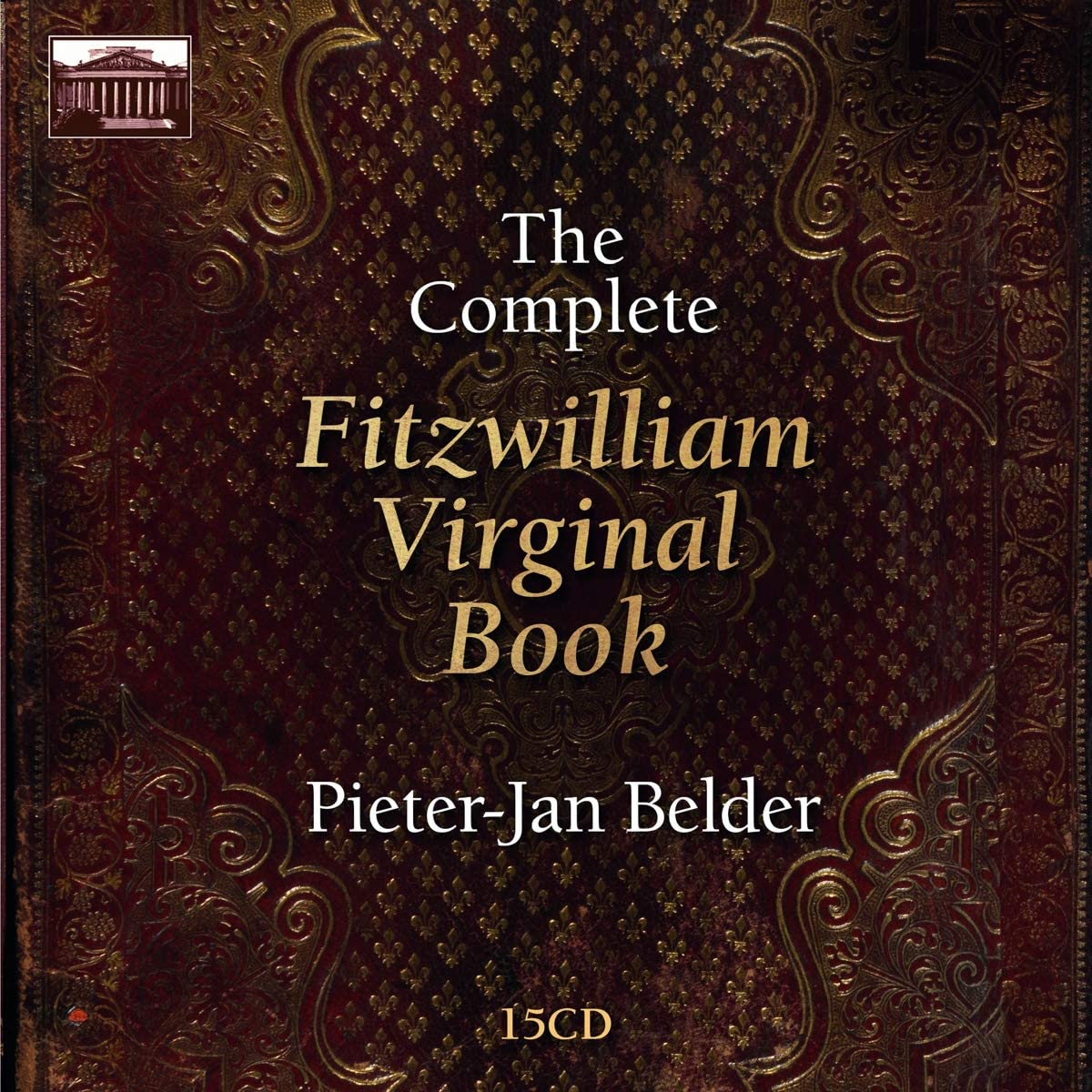Pieter-Jan Belder
978:46 (15 CDs in a card box)
Brilliant Classics 95915
Click HERE to buy this (15 CDs for less than £40!) at amazon.co.uk
If ever a project deserved the term magnum opus this complete recording of the Fitzwilliam Virginal Book is it. This remarkable volume contains 297 pieces and was compiled towards the end of the Tudor period by Francis Tregian – in the manner of musical history, the books doesn’t bear the name of this intrepid individual, who is thoroughly deserving of our gratitude, but that of an aristocrat, the 7th Viscount Fitzwilliam, through whose hands it briefly passed in the 18th century. Pieter-Jan Belder, a van Asperen student, has form as regards complete recordings, having previously committed the complete keyboard sonatas of Scarlatti as well as the complete keyboard music of Rameau and Soler to disc, with further ambitious ‘integral recordings’ in his diary. A comprehensive programme note by Jon Baxendale proves an indispensable guide through the music and its composers. I had honestly anticipated that the quality of the music in such a huge volume might prove variable, and as the project began with Belder recording his favourite composers, only later opening out over the next eight years into a complete recording, I feared that I might be left with the dross at the end. Not only does there seem to be no dross, but astute programming means that the attention is held thoroughly throughout each of the individual CDs. The repertoire varies from really quite slight miniatures to works of symphonic proportions, which seem in some cases to cry out for orchestration. If occasionally sets of variations outlive their welcome, this is by no means the fault of the performer, but rather that of the composer or perhaps just the comprehensive taste of the time. Much more frequent than these moments of ennui are the regular delights of unexpected harmonic and melodic turns of phrase, passages of stunning beauty and quirky examples of the composers’ wit and invention. In all, 25 composers are represented, some of them household names from their contributions to other genres such as Byrd, Gibbons, Tallis, Tomkins, Parsons and Philips, others chiefly known for their keyboard music such as Bull and Farnaby. Belder’s approach has been commendably flexible, ‘cheating’ where he feels necessary regarding period fingering, and taking an imaginative intuitive approach to ornamentation. The playing throughout is impeccable, but also more importantly persuasive and engaging. Although a few pieces are played on virginals and muselar, and even a couple on chest organ, the instruments of choice are modern copies of Ruckers harpsichords, most notably an Adlam Burnett 1980 copy of the famous 1638 Ruckers in Edinburgh. This latter instrument has a deliciously full mellow tone, and probably is indeed the ideal vehicle for this music. I wouldn’t be doing my job if I didn’t express a couple of tiny reservations, namely that the way the project developed means that this Burnett/Ruckers harpsichord only appears in time for the later CDs and so we don’t get to hear the major works by Bull and Philips on this fine instrument. My second comment slightly negates this, by pointing out that most of the instruments, including the Burnett/Ruckers, are slightly later in period than the music, and when we hear the couple of tracks for which Belder uses virginals we are in a very different sound world. I admit it his hard to imagine some of the more ambitious works limited to the virginals, but on the other hand, some of the slighter works sound a little overblown on the Burnett/Ruckers harpsichord. Whatever my tiny reservations, I found this collection utterly enthralling, and Belder’s imaginative and consummately musical playing, as well as the consistently vivid recordings made in the sympathetic acoustics of a selection of Dutch churches, helped turn what could easily have been a bit of a chore into a complete delight.
D. James Ross
